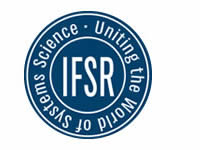IFSR Newsletter 2012 Vol. 29 No. 1 September

Dr. Merrilyn Emery, introduced by Gary Metcalf, IFSR Newsletter 2012 Vol. 29 No. 1 September
Dr. Merrilyn Emery
Department of Applied Human Sciences, Concordia University, Montreal, and Fred Emery Institute, Melbourne
W. Ross Ashby (b. 1903, London, d. 1972) was a psychiatrist and one of the founding fathers of cybernetics. He developed the homeostat , the law of requisite variety, the principle of self-organization, and the law of regulating models. He wrote “Design for a Brain” (1952) and an “Introduction to Cybernetics” (1956).
The commemorative lecture, sponsored by the International Federation for Systems Research (IFSR), is held every second year on the occasion of the EMCSR-Conference in Vienna.
It is an honour to deliver the Ross Ashby Lecture, a memorial to a great man and a great mind. Open Systems Theory (OST) is one of the approaches to social science that includes Ashby’s work amongst its foundations. However despite its solid foundations, OST seems to have become almost invisible since Fred Emery [my husband] returned to Australia in 1969. Up until that time, it was well known in the Northern hemisphere, certainly Emery & Trist’s 1965 citation classic was well known, as was also just as certainly that subsection of OST concerned with the development of jointly optimized sociotechnical systems.
The reasons for this period of relative invisibility don’t matter but as OST has made huge strides since 1969, it seems a shame that such solidly based and reliably successful developments are not widely known to today’s international systems community. I hope to start building a bridge across that current knowledge gap.

Dr. Merrilyn Emery, IFSR Newsletter 2012 Vol. 29 No. 1 September
In overview, this paper firstly outlines the major developments of the OST conceptual framework from its misty historical origins to today. It discusses the basic purpose of OST and how that purpose is embedded in its methods. Finally, it describes the asymmetrical nature of the open and closed conceptualizations and proposes a logical way forward, not only to bridge what is seen as a conceptual gap but also to radically accelerate our practical progress towards active adaptation.
- Following a chronology of the major developments since the definitive break with closed systems in 1965, the paper describes the current state of the OST art and science. OST adheres strictly to the conventions and methods of science: the art lies in the understanding, skill and human qualities, such as humour, with which it is practiced in the field. The paper describes the foundations on which OST is based, its definitions of system and the social environments within which humans behave and change, its definition of people and their various potentials in terms of ideal-seeking, learning and consciousness, its conceptualization of ‘organization’ in terms of the genotypical design principles of organizational structures and how we use their implications for decisions about what is ethical scientific research.
- The development of OST is grounded in the world hypothesis of contextualism and it contrasts starkly with the world hypothesis of mechanism which dominated the history of the planet from about 1793-1950, landing us in the pickle we are in today with accelerating climate change. Since 1950 we have been struggling with a social field characterized by relevant uncertainty, the source of now galloping maladaptions, both active and passive. OST’s purpose, framed by this changing causal texture of the social field is the taming or domestication of this field, to be achieved by a return to active adaptation throughout society, to a modern form of the adaptive social field that our ancient cultures maintained for at least 60,000 years.
Understanding OST in this long term context explicates the purposes of the three major methods developed from that framework. The results of these methods, both in terms of practical systems on the ground and empirical data to inform planning, policy making and future research, are promising. It is important that we diffuse OST as rapidly as possible given the similarly rapidly closing time frame in which to cease CO2 emissions. The Occupy movement needs OST methods right now. - Bridging the gap between open and closed systems entails a simple logic leading to a proposition. Whether we look at the relations of the world hypotheses behind these formulations, contextualism for open systems and formism, mechanism or organicism for closed, or the relations between open and closed themselves, we see that the relations are inherently asymmetrical. Contextualism and open systems do not preclude the use of other world hypotheses or closed systems analyses but starting with the use of formism, mechanism or organicism or the assumption of a closed system precludes the possibility of contextualism and an open system.
It is clear, therefore, that the concept of an open system has primacy in terms of a comprehensive social science and consequent enhanced understanding of the human and social world. In so far as open systems are rooted in synthesis and closed systems in analysis, synthesis covers the synthesis of analyses and the synthesis of levels of synthesis and analysis. This is not a play on words: in any major piece of research, there is always the possibility of different dimensions of the project being approached with synthetic and analytic methods and integrated into an overall synthesis.
Brief examples from the fields of organizational democratization and community planning for the mitigation of, and adaptation to, climate change illustrate the point. There is no need for a gap in practice any more than there is a need for an either/or distinction between open and closed at the conceptual level.
Dr. Merrilyn Emery
